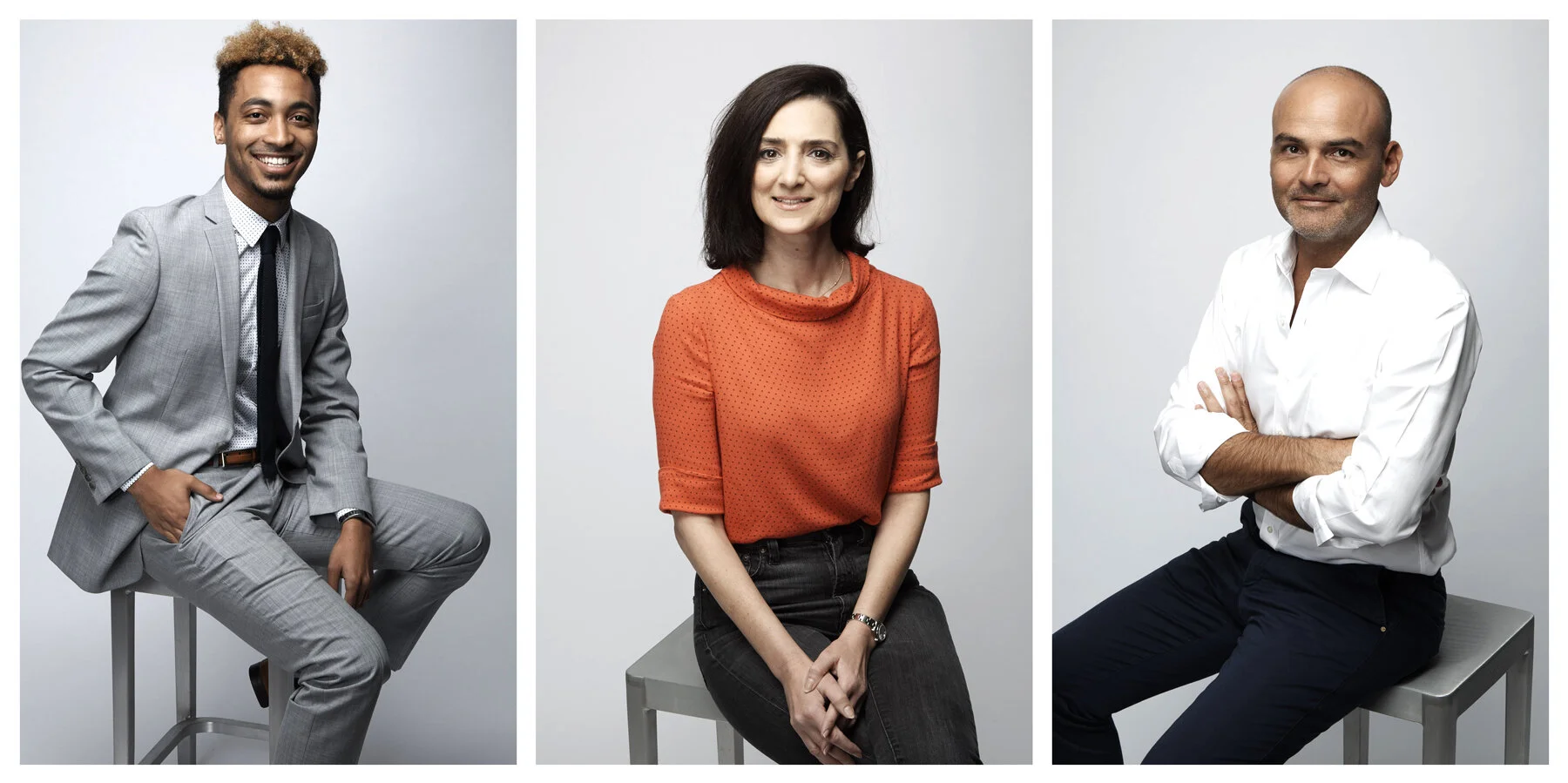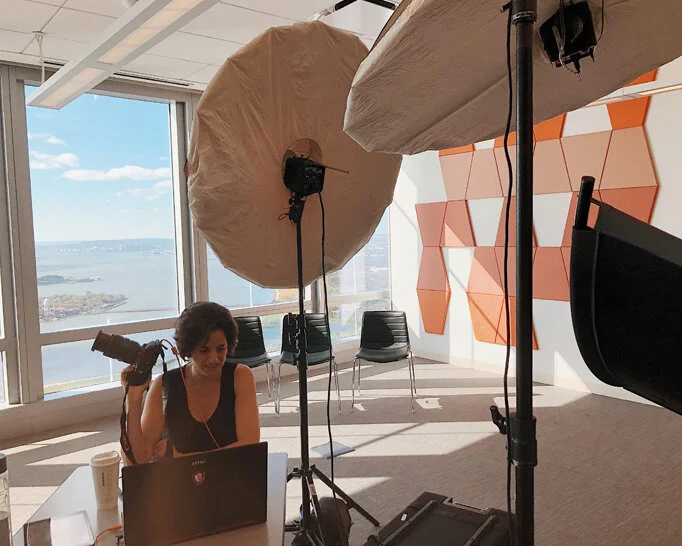Business Photography vs. Headshot Photography
We talk about business photography and headshot photography in a lot of our writing. But what is the difference? In this post, will define these terms. We will break down how it all works together to create a complete picture of your business.
Business Headshot Photography
Everyone knows about corporate and business headshot photography. It is exclusively about covering individuals in a consistent way company-wide. It is a cropped-in, shot, typically horizontal and it focuses on one person. The background is often solid, but it is sometimes environmental, to suggest something about the business. We are New York corporate headshot photographers that do thousands of these a year.
It is now expected that a company website or a LinkedIn profile features photos of staff and individuals. Website visitors will see the photos and feel more familiar with your team. Someone who wants to know more about your individual professional experience will form their first impression by looking at your LinkedIn profile photo. Speakers submit them to a conference where they are speaking at so attendees can know who is presenting. Thought leaders will share this image with a magazine who is publishing their writing.
When we at The Booth talk about headshot photography, we are mostly focusing on business headshots but headshots are used heavily in creative industries. We are talking about headshot photography for actors, musicians and other creative talent. The goal for people in these fields is to showcase their talent or their type. They are all about YOU. The creative choices you make can be highly individualized. With a corporate headshot the image will say something about you and the organization for which you work. In this case the image highlights the individual but maintains overall company-wide consistency.
The lion's share of our jobs are exclusively to cover headshots for our clients. If they are a small/mid-size business we might go and cover the entire staff. If they are large corporate clients, we are more likely to be brought in to target specific departments. Having a sales conference? Everyone on your sales team is in one place, so bring us in to do new, updated and consistent headshots.
Business Photography
New York Business Photography
We also do business photography. Business photography is where we cover all aspects of a business. Headshot photography is a sub-category of business photography. Here are other things we would include as business photography:
-office photography
-product shots
-candids
-event candids
An Aside: Products Shots and Advertising Photography
Product shots and other imagery that you would use for advertising or, say e-commerce, are in their own category and require a specific type of photographer, studio, light, etc. We have limited capability for this kind of work. More typically, companies who come to us need to highlight their people and their place of business
Back To Office Photography
The goal of office photography is to showcase all or certain elements of your place of business. This can include interiors (offices and other workspaces, common spaces, exteriors of the building, etc). A client might ask for office candids that show their staff working collaboratively in a boardroom, at their desks, walking the halls, and otherwise going about their daily business.
There are a few reasons that a business come to us for this kind of work. If they are a new business and their office is an important part of the client experience, they will want to use these images on their website. For example, a medical practice might want to show new patients more about what to expect when they arrive at their appointment. Seeing comfortable waiting rooms, up-to-date exam rooms and a neatly and professionally dressed staff will help them feel confident about the care they will receive.
The most common times that clients come to us looking for a New York business photographer is: 1) when they are starting a new business and want to launch with all new content, or 2) when a client moved location and past images might be, in some way misleading for a client or 3) when a client is rebranding and they want to update all of their imagery to be consistent with their design and mission.
Let's talk about stock photography. There is plenty of stock photography out there that can help shortcut a company into a new look. But if you go this route, make sure the work is carefully curated for consistency of style and message or it can feel inconsistent or disingenuous.
Photos of your people in your office is preferable as it is simply more authentic. Imagery produced by a talented and well-prepared photographer will display your company as it's best self. It will feel natural, yet polished. It will help clients who are considering your services feel a confidence and connection that you know how to present yourself professionally and in a genuine way.
Business Photography for Meetings and Events
Conference Photography
Photography done at meetings and events is also business photography. Conference photography usually includes photos of speakers, awards ceremonies and other presentations. Since conferences are about bringing people together in some way, you can also showcase different ways that this is happening – in workshops, during coffee breaks, at social moments, etc. And, of course, covering details of signage, décor, and other elements help illustrate the creative vibe of the gathering.
Collaborating at a corporate conference.
It can also be important to cover smaller scale meetings. Perhaps there is a half day meeting where a senior executive is coming to welcome a special group of new hires. It could be a meaningful moment to cover and use in your marketing, online or in print.
Why cover meetings and conferences? The most obvious answer is that you are a conference planner and these images showcase your services. But there are other reasons for non-planners to cover a conference they are hosting or maybe even sponsoring. It is content that can be used for attracting attendees for future meetings. You can use the content for advertising and recruiting staff. It is content you can release over social media to build brand awareness. Finally, having images of the meeting or conference can be a tool or record. You are covering a moment in time that you can look back on and reference for future projects.
In Summary
In summary, headshot photography is only one part of business photography. These are all things we do. There is still a lot to know and understand. Please let us be a resource. We are happy to be helpful!























































































